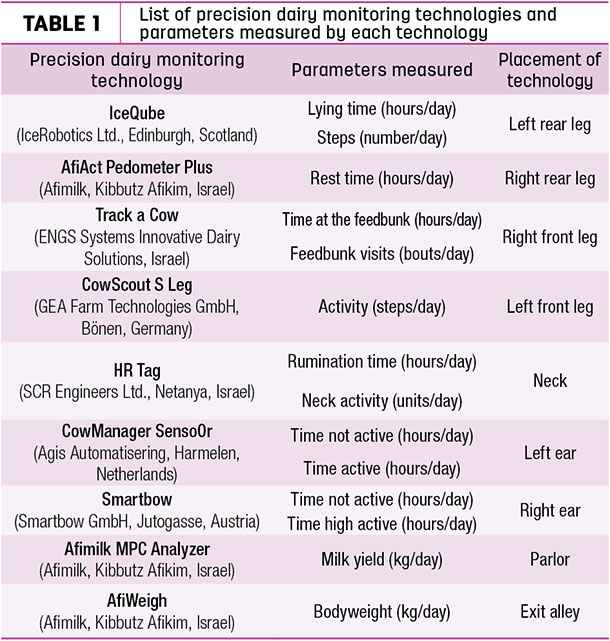Lameness is a painful disease that decreases cattle performance and is one of the most important health and welfare concerns in the dairy industry. Many researchers have reported behavior and production differences in lame versus sound cows.
Researchers have reported that lame cows ate fewer meals, produced less milk and lied down more compared to their sound counterparts. However, in the scientific community, debate exists about which behavior and production parameters to evaluate for lameness detection.
This topic was discussed in a presentation titled, “Behavioral comparisons between lame and sound cattle using precision monitoring technologies,” at the 2016 Precision Dairy Farming Conference held in Leeuwarden, Netherlands.
The study
The study objective was to measure changes in behavior with changes in gait scores using precision monitoring technologies. This study was conducted at the University of Kentucky with 126 Holstein cows. Holstein cows were equipped with multiple precision monitoring technologies to measure different behaviors and production parameters (Table 1).

The behaviors monitored by the technologies are not an exhaustive list of every behavior the technologies can monitor but is rather only the behaviors evaluated for this study. Cow gait was assessed using a 1 (sound cow) to 5 (severely lame cow) scale.
General symmetry, tracking, spine curvature, head bobbing, speed and abduction/adduction were scored individually weekly and then averaged together so each cow received one gait score weekly.
Results
As the cows became increasingly lame (meaning the gait score increased by 1 unit):
- IceQube hours lying increased by 0.12 hour per day.
- IceQube steps decreased by 70.91 steps per day.
- Afi rest time increased by 0.16 hour per day.
- SCR HR neck activity increased by 4.61 active units per day.
- GEA activity decreased by 228.23 steps per day.
- Sensoor time not active increased by 0.59 hour per day.
- Sensoor time active increased by 0.11 hour per day.
- Track a Cow time at feedbunk decreased by 0.19 hour per day.
- Track a Cow feedbunk visits decreased by 0.65 visit per day.
- Smartbow time not active increased by 0.35 hour per day.
- Smartbow time high active decreased by 0.12 hour per day.
Afi milk yield per day, Afi bodyweight per day and SCR HR rumination time per day were not related to lameness.
Discussion
- As the cows became increasingly lame, they lied down for longer. This also meant they took fewer steps and became less active overall. As cows become increasingly lame, they may lie down for longer to take pressure off their hooves.
- Milk yield did not change as cows became more lame. Other studies have reported a decrease in milk yield in lame cows. This study, however, did not show a difference. This may be because the main cause of lameness at the University of Kentucky is digital dermatitis. When cows have digital dermatitis, a decrease in milk yield may not always occur.
- A decrease in time at the feedbunk and feedbunk visits was shown as cows became more lame. Other studies have reported similar findings.
However, other studies also reported increased meal sizes so cows could make up for less time spent at the bunk by increasing their dry matter intake per feedbunk visit. In this study, the lack of differences in bodyweight may be attributed to an increase in lame cows’ meal size while at the bunk.
- Neck activity and ear activity both increased as cows became more lame. Because lame cows tend to bob their heads as they walk, neck- and head-based activity measurements may increase.
Conclusions
As cows became increasingly lame, changes in behavior occurred. However, no differences were seen in milk yield, bodyweight or rumination time. While these results help explain the behavior of lame cows, detection of lame cows is still needed as future research studies. ![]()
Jeffrey Bewley, Ph.D., is an associate extension professor with the University of Kentucky. Email Jeffrey Bewley.
Barbara Wadsworth is a graduate research assistant at the University of Kentucky. Email Barbara Wadsworth.







